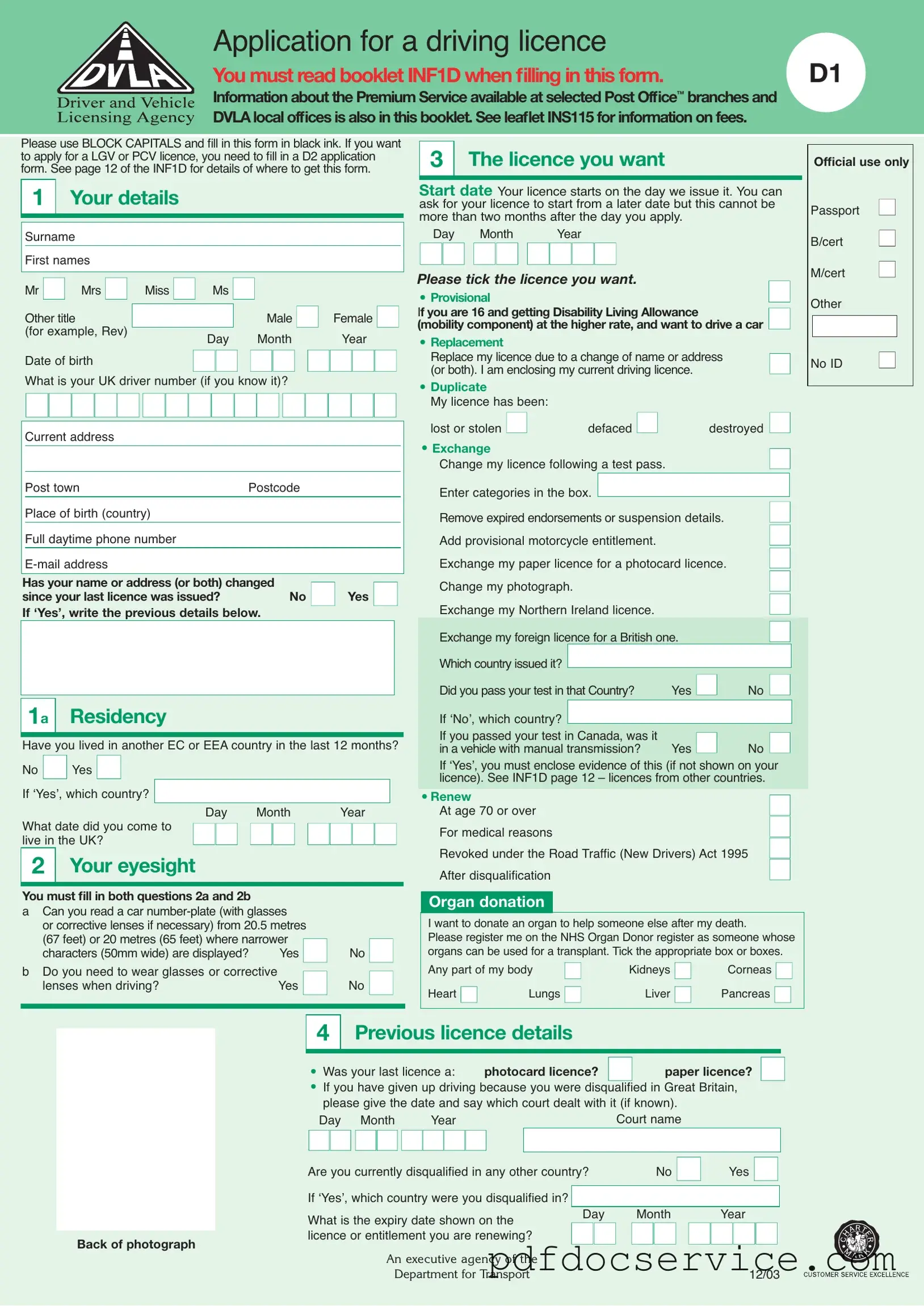The D1 DVLA form is an essential document for anyone looking to apply for, renew, or exchange a driving licence in the UK. This form is not just a piece of paper; it serves as a gateway to your driving privileges and is designed to gather crucial information about your identity, residency, and medical fitness to drive. When completing the D1 form, applicants must provide personal details such as their name, date of birth, and address, ensuring accuracy to avoid delays. It also requires information about your eyesight and whether you need corrective lenses while driving. Depending on your circumstances, you may be applying for a provisional licence, a replacement for a lost licence, or even an exchange of a foreign licence for a British one. The form includes sections on previous driving history, health conditions that could impact your ability to drive, and the necessary identification documents to confirm your identity. Additionally, the D1 form emphasizes the importance of following guidelines, such as using block capitals and black ink, to ensure clarity. Understanding the requirements and sections of the D1 DVLA form can make the application process smoother and more efficient.
